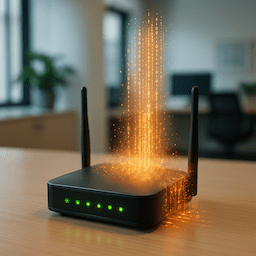In networking, IPv6 is a crucial topic that is gaining increasing importance as the internet continues to expand. In this comprehensive guide, we will delve into what IPv6 is, why it is significant, how it works, and provide a tutorial to help beginners get started with IPv6 networking.
What is IPv6?
IPv6, or Internet Protocol version 6, is the most recent version of the Internet Protocol (IP) that devices use to communicate over the internet. It serves as the foundation for internet communication by providing unique numerical addresses for each device connected to the internet. IPv6 was developed to address the limitations of its predecessor, IPv4, which is running out of available addresses due to the rapid growth of internet-connected devices.
Significance of IPv6
The significance of IPv6 lies in its ability to provide a vastly larger pool of IP addresses compared to IPv4. With IPv6, there are approximately 340 undecillion (3.4×10^38) unique IP addresses available, ensuring that the internet can continue to grow and accommodate the increasing number of devices connecting to it. Additionally, IPv6 offers improved security, better support for mobile devices, and enhanced network performance.
How IPv6 Works
IPv6 uses a 128-bit address scheme, compared to the 32-bit address scheme used by IPv4. This allows for a significantly larger number of unique addresses. IPv6 addresses are represented as eight groups of four hexadecimal digits separated by colons. For example, an IPv6 address may look like 2001:0db8:85a3:0000:0000:8a2e:0370:7334.
IPv6 also introduces new features such as stateless address autoconfiguration, which allows devices to automatically configure their own IP addresses without the need for a DHCP server. Additionally, IPv6 includes built-in support for Quality of Service (QoS), which enables prioritization of certain types of traffic for improved performance.
Getting Started with IPv6
Check IPv6 Compatibility: Before diving into IPv6 networking, ensure that your network infrastructure, devices, and internet service provider support IPv6. Most modern operating systems and networking equipment are IPv6 compatible, but it’s always a good idea to double-check.
Enable IPv6 on Your Devices: To enable IPv6 on your devices, navigate to the network settings and look for IPv6 configuration options. You may need to enable IPv6 connectivity or configure IPv6 addresses manually depending on your network setup.
Test Your IPv6 Connectivity: Once IPv6 is enabled, you can test your connectivity by visiting IPv6-enabled websites or using online tools that check your IPv6 connectivity. This will help you verify that your devices are successfully communicating over IPv6.
Learn IPv6 Addressing: Familiarize yourself with IPv6 addressing schemes, including the structure of IPv6 addresses, address types (unicast, multicast, anycast), and how to subnet IPv6 networks. Understanding IPv6 addressing is essential for effectively managing your network.
Practice with IPv6 Labs: To gain hands-on experience with IPv6 networking, consider using online IPv6 labs or simulators that allow you to configure and test IPv6 networks in a virtual environment. This practical experience will help solidify your understanding of IPv6 concepts.
Conclusion
In conclusion, IPv6 is a fundamental aspect of modern networking that offers a solution to the address exhaustion problem faced by IPv4. By understanding the basics of IPv6, its significance, and how to get started with IPv6 networking, beginners can lay a strong foundation for building and managing IPv6-enabled networks. Embracing IPv6 is essential for staying current with evolving networking technologies and ensuring the scalability and security of internet communication in the future.




